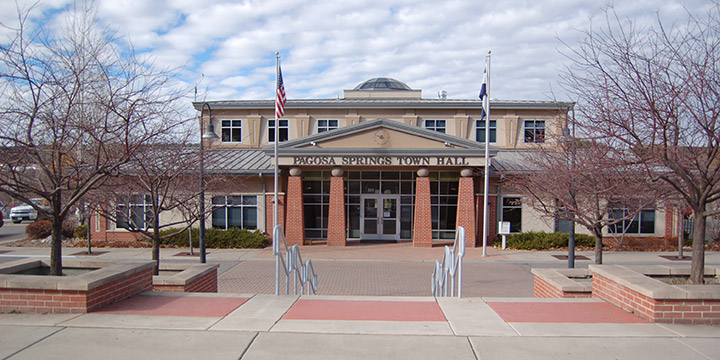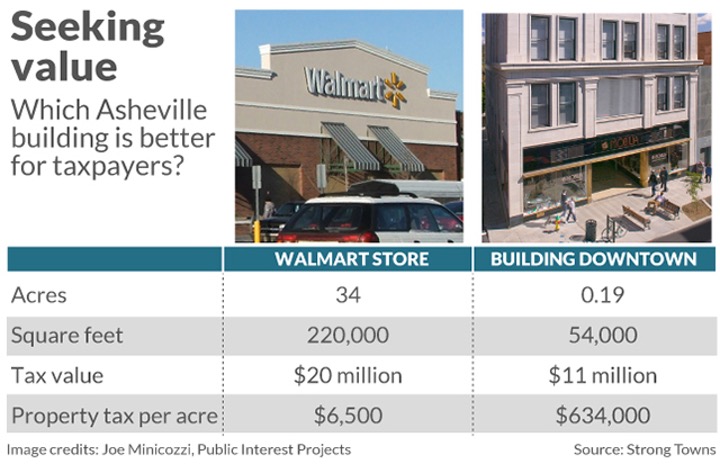A Daily Post reader copied me yesterday on an email he’d sent to the Pagosa Springs Town Council.
Dear Mayor Volger and Town Council Members,
The article linked below is from today’s edition of MarketWatch which is a financial information website and subsidiary of Dow Jones & Company.
I believe this article is worthy of consideration as it addresses a subject currently under discussion in our local area.
The link led to a new article by Charles Marohn with a somewhat lengthy, but nevertheless descriptive, title:
“Opinion: This ‘Ponzi scheme’ surrounding development leaves most cities and towns functionally insolvent”
Worth reading?

We’ve republished several articles by Chuck Marohn over the past couple of years, after coming across the StrongTowns.org website. Mr. Marohn is the Founder and President of Strong Towns and the author of Strong Towns: A Bottom-Up Revolution to Rebuild American Prosperity. He’s a Professional Engineer licensed in the State of Minnesota, and a land use planner with two decades of experience. He holds a bachelor’s degree in Civil Engineering and a Master of Urban and Regional Planning, both from the University of Minnesota.
The most unusual thing about Mr. Marohn, in my opinion, is his willingness to look at ‘urban growth’ from a realistic, community-minded point of view. As suggested by his recent article in MarketWatch, there’s an element of “Ponzi” scheming to the way American communities grow, but all too few people involved in promoting said ‘growth’ are willing to pull out their pocket calculators and truly consider what we are leaving for our grandchildren… assuming that we care a whit about our grandchildren.
From Mr. Marohn’s latest op-ed:
For a community, rapid growth is easy. Bolstered by state and federal funding, municipal bond debt financing as well as tax incentives and deferrals, cities and towns that want to induce new development have many means of doing so. With each transaction, they receive immediate fees and tax revenue, but also take on the long-term responsibility to provide ongoing service, maintenance, and—in the case of infrastructure—replacement.
And while that new big box store, strip mall, or drive-thru restaurant may last only a couple of decades, the maintenance obligations from all that asphalt and those new sewer lines are eternal. Too often, though, we haven’t ever bothered to quantify those obligations. When you begin to do the math on our development pattern, what you find is alarming.
Most cities and towns in North America are functionally insolvent. This is not hyperbole. It comes down to a simple question: Is new development producing enough wealth to fund the long-term maintenance of its own infrastructure—let alone public safety and all the other services that we expect government to provide? When we examine these costs and revenue streams, we often find the answer is no.
“For a community, rapid growth is easy…”
We might phrase that sentence slightly differently. “For a community, thoughtless growth is easy.” Or, “For a community, growth that generates gobs of money for a few rich investors is easy.” Other kinds of growth — thoughtful growth, growth that produces something other than more investment income — that kind of growth is more difficult, and more unusual.
Chuck Marohn has been openly questioning the usual patterns of urban growth since the early 1990s. (You can read some of his detailed thinking in this nine-part Daily Post op-ed.) Much of his research and writing concerns the financial end of urban development — a financial end that, in many cases, appears unsustainable. But he’s also gathered a small staff at Strong Towns who research and write about other aspects of urban development, with an eye to “How can we do a better job of designing our communities?”
As my Daily Post reader noted in his email to the Town, Mr. Marohn’s essay could be seen as appropriate reading for a Council that recently approved the creation of yet another layer of government bureaucracy: an ‘Urban Renewal Authority’ to promote ‘growth’ within the Town boundaries. The first project that this Authority will be considering will undoubtedly be a proposed expansion of the Springs Resort onto a 27 acres of perpetually-vacant travertine meadow just south of the resort.
Over the past year, Texas-based developer David Dronet has conducted several public and private meetings to promote this expansion project, and the use of Tax Increment Financing (TIF) to pay for the new infrastructure on the vacant property — new infrastructure that will greatly increase of the value of that vacant meadow. For some reason, certain folks involved in the Town government — staff and elected officials — have been acting lately as if the development of this vacant property is some kind of dire emergency — an emergency that will require every government entity in the community to donate tax receipts back to Mr. Dronet and his investor team, in order to build the streets, water lines, gas lines, sewer lines and other infrastructure which Mr. Dronet will then donate back to our local governments, to maintain forever.
From Chuck Marohn’s thoughtful “Ponzi scheme” article:
The problem is invisible, until it isn’t anymore. We can choose not to see it as long as our infrastructure is new enough to not yet need replacement, or as long as new growth allows us to cover the costs of the previous iteration of growth in what amounts to a giant Ponzi scheme. To truly assess our cities’ and towns’ solvency, we must start asking the question: not “Are we growing?” but “Are we experiencing productive growth?”
A metric of success that planners and other local officials can use to ask this question is value per acre. This is a measurement of the productivity of a land-use pattern, much in the same way that yield per acre is the measure of the productivity of a farm field. How much wealth is created on each acre of developed land? It’s simple to compute and powerfully correlated with success. Yet few cities consistently incorporate this metric into their land-use analysis.

When modern cities are analyzed by this measure, pre-Depression neighborhoods — even those that are far from affluent — financially outperform even the newest stuff being built today. Collections of blighted homes and underperforming commercial stock are routinely found to provide a greater return on the public’s investment than anything built in the past couple of decades. Acre by acre, they produce more concentrated wealth and consume less public infrastructure and services. It might shock most people to learn that in many American cities, the poorest neighborhoods subsidize the wealthiest.
Yes, folks. As weird as it may seem, the oldest neighborhoods in Pagosa Springs — over the long term — would provide the manpower and the taxes to subsidize a potential Springs Resort expansion.
